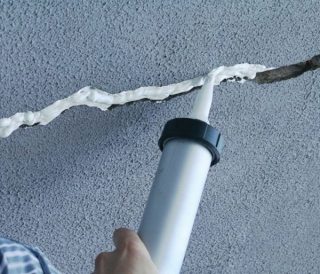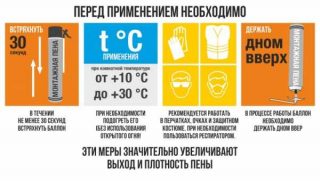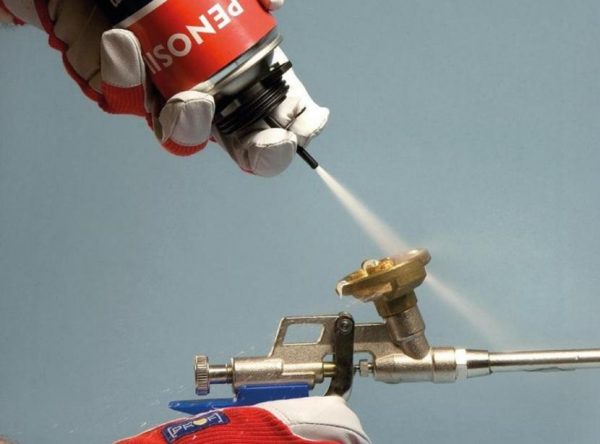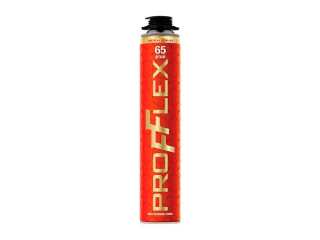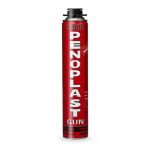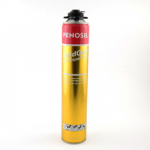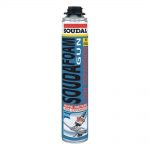The standard application of polyurethane foam is for joint sealing. The composition waterproofs the junction and fills it. In air, the foam expands strongly, and when hardened, it forms a porous, but dense mass. Some jobs require its opposite - low expansion polyurethane foam.
What is low expansion polyurethane foam for?
The composition is used for sealing small joints and cavities - no more than 10 cm... It is filled with thin assembly seams, chips, used for gluing. An irreplaceable material when working with delicate surfaces, from which it is extremely difficult and traumatic to remove excess foam.
Formulation characteristics
The foam is available in a wide variety of formulations. The level of expansion in the mixture depends on the type of hardener, which can be varied.
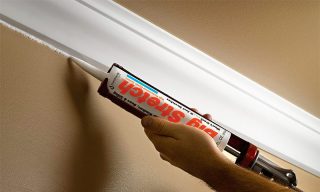
Silicone - attract with high adhesion. The sealant can be taken to work with ceramics, metal, enamel, smooth hard plastic. The composition is resistant to deformation and is not afraid of water and ultraviolet radiation. Produced in 3 different categories.
- Acidic - are marked with the letter "A". They contain acetic acid, so they are not suitable for working with metal. The composition is cheap, waterproof and very easy to use.
- Alkaline - based on amines, designated by the letter "B". In everyday life, they are rare, as they are designed to solve special problems.
- Neutral - the marking includes the letter "N". They are made on the basis of alcohols and ketones. They are called neutral for compatibility with any materials from glass to drywall. The cost of neutral sealants is higher.
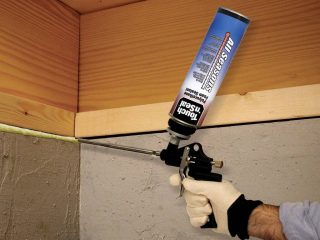
Acrylic - polyacrylates are the basis. The mixtures do not contain organic solvents, therefore they are odorless, dry quickly and do not pose a health hazard.
Acrylic mixture is more often used for interior work. Such compositions are inferior to silicone in elasticity, the hardened seam is usually rough, but easily stained.
The main disadvantage of acrylic sealant is less resistance to temperature changes. Only special mixtures can withstand temperatures down to -10 ° C. This is another reason why polyacrylate based foam with minimal expansion is used for interior applications.
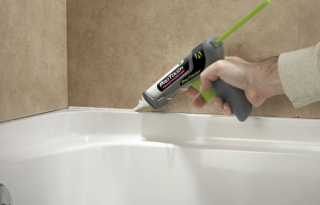
Polyurethane - the most popular polyurethane foams. They are characterized by very high adhesion, resistance to any weather factors and durability.
Polyurethane foam is used for sealing joints for a long time, since it is very difficult to dissolve or remove cured polyurethane foam. Try not to use the mixture when working with delicate surfaces. For sealing joints when installing plumbing, this is the best option, since the moisture resistance of the sealant is unmatched.
Criterias of choice
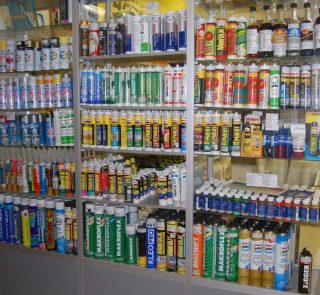
To find the optimal composition, you need to take into account many different factors.
- The smaller the dimensions of the seams and joints, the less expanding the composition needs to be selected. Expansion ratio indicated on the packaging.If the seam depth is very small - up to 1 cm, foams are taken in which there is no secondary expansion at all. For gaps up to 10 cm, compositions with a minimum expansion coefficient are selected.
- The composition of the mixture - if the seam needs to be sealed reliably and for a long time, it is better to take polyurethane. For outside, this option is preferable, since polyurethane is resistant to frost and water. For interior work in a residential area, quick-drying acrylic sealants are purchased. For rooms with difficult operating conditions - kitchen, bathroom, pool, terrace - silicone sealants are better. The latter have a higher elasticity, so when processing complex curved seams, it is also better to use silicone mixtures.
- pH - to work with metal and stone, especially artificial ones, do not take acidic compounds. They eat away at these materials. Neutrals are versatile, but more expensive.
- Balloon type - if the volume of work is small, you can buy a regular container with a tube nozzle. If there are many gaps, a pistol nozzle is used to facilitate the work. Not all cylinders are suitable for it, which you need to pay attention to when buying. In any case, preference is given to metal containers.

Terms of use
- Before work the surface is prepared: cleaned of dust and dirt, degreased with alcohol or acetone. It is recommended to wet the joint with water immediately before filling in order to improve adhesion.
- The nozzle pistol is placed on the cylinder, shake it several times to mix... During operation, the balloon is held vertically, with the bottom up. If the work takes place outdoors at low temperatures, the cylinder is heated in a container with hot water before use.
- The nose of the pistol is brought to the joint, the trigger is pulled and gradually release the composition... Average speed. You cannot move too fast, as the seam will turn out to be thin and will not fill the cavity. First, set the knot of adjustments to the minimum value, having adapted, you can increase the pressure.
- The foam expands weakly and therefore gives the impression of fast-setting. This is not entirely true. Do not touch the mass for 2 hours.
- Excess composition is removed immediately with a damp sponge or tissue.
After finishing work or during a break the gun is washed with a special agent... Otherwise, the sealant fills the nozzle and hardens in it.
When working with silicone, polyethylene, Teflon and its analogues, the sealant is not used. Adhesion to such materials is too low.
Non-expanding polyurethane foam manufacturers
- SOUDAL Is a Belgian company, a leader in the market of sealants and gaskets. It has existed for over 50 years. The company offers sealing compounds with a wide variety of properties: pistol, winter, one- and two-component, for professional and domestic needs. She pioneered the use of low expansion foam and a higher performance option for small gap applications.
- PENOSIL Is an Estonian company that entered the market in 1998. Produces about 10% of all polyurethane foam in Europe. Offers mixtures for work at high and low temperatures, different densities and porosities. Produces compounds that can solidify at -18 ° C and withstand frosts down to -30 ° C.
- Profflex Is a Russian company specializing only in polyurethane foam. The range includes all professional and household mixtures: all-season, summer, winter, fire-resistant, foam adhesives and, of course, low expansion sealants.
- Kim tec - German manufacturer, produces polyurethane foam, sealants, painting and roofing materials.Offers formulations of different densities and for different application methods.

